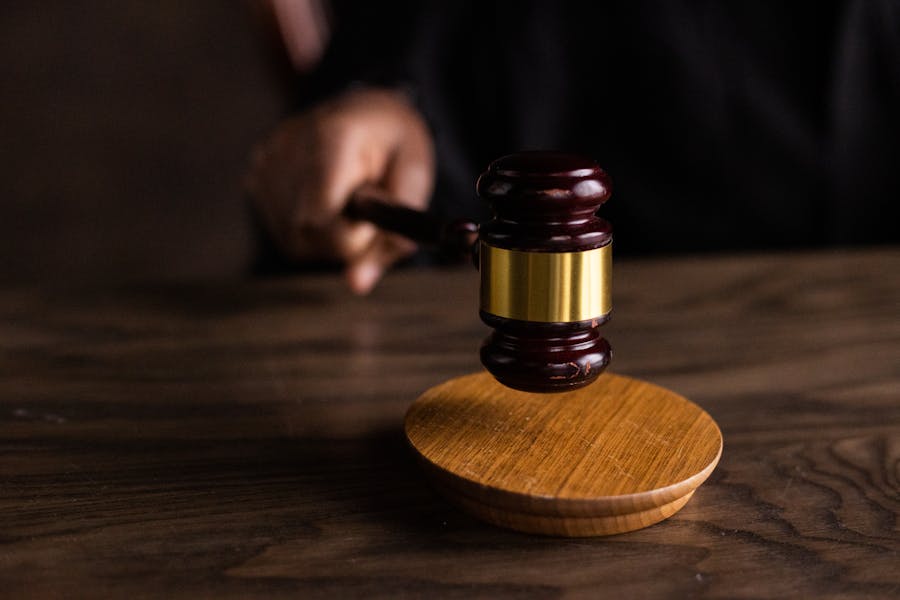Stare decisis—Latin for “to stand by things decided”—is the judicial practice of treating earlier decisions as guides (and sometimes commands) for resolving current cases. In real life, that means judges do not start from scratch every time a dispute reaches court. They look to precedent. If a higher court has already answered the same legal question, lower courts are bound to follow it. Even the same court will usually follow its own prior rulings unless it has compelling reasons not to.
That discipline is not busywork. It is the engine of legal stability: businesses sign contracts, governments write regulations, and people plan their lives based on what courts have already said the law means. At the same time, precedent is not a cage. When a prior decision proves unworkable or poorly reasoned—or when facts, law, or social realities move on—courts can limit, distinguish, or in rare cases overrule it. Understanding how those countervailing forces play out is the key to seeing how stare decisis shapes judicial outcomes.
How judges actually use stare decisis (step by step)
- Frame the precise legal question.
Courts start by narrowing the issue: “What rule must we apply to decide this case?” Only the holdings—rules necessary to the outcome—of earlier cases matter; stray commentary (dicta) does not bind.
- Map the hierarchy (vertical precedent).
Trial courts must follow their intermediate appellate courts and their highest court. All lower courts must follow the U.S. Supreme Court on federal questions. This vertical structure is the strongest form of stare decisis.
- Sort authorities (binding vs. persuasive).
A state high-court decision on a state statute binds that state’s lower courts. A similar case from another state or a federal circuit might be persuasive but not mandatory. Judges weigh the quality of reasoning, recency, and factual fit.
- Extract the holding.
Judges read earlier opinions carefully to identify the controlling principle actually used to decide the case. That holding—not the opinion’s broad rhetoric—is what binds.
- Assess similarity or difference (analogy vs. distinction).
If today’s facts closely resemble the earlier case’s facts and policy concerns, stare decisis presses toward the same result. If a material difference undermines the earlier case’s logic, the court may distinguish it and rule differently without rejecting the precedent.
- Consider limiting or overruling.
Overruling is extraordinary. When asked to do it, courts consider factors like (a) workability, (b) reliance interests, (c) consistency with related doctrine, (d) quality of the earlier decision’s reasoning, and (e) changes in law or underlying facts. A court might instead limit a precedent to its core facts or clarify it to resolve confusion.
- Explain, explain, explain.
Whether following or departing, judges must give reasons. That public justification is part of what gives stare decisis its legitimacy.
Vertical vs. horizontal: two directions stare decisis pulls
- Vertical stare decisis (top-down): Lower courts are bound by higher courts. A federal district judge cannot disregard a Supreme Court case because they “disagree”; they must apply it faithfully or explain why the present case is materially different.
- Horizontal stare decisis (within the same court): Courts tend to follow their own past decisions for stability. The U.S. Supreme Court treats its prior cases with “great respect” but reserves the power to overrule them in rare, justified circumstances. Federal circuits follow earlier panel decisions unless they sit en banc or are superseded by the Supreme Court.
What stare decisis looks like in landmark cases
- Brown v. Board of Education (1954) overruled Plessy v. Ferguson’s “separate but equal.” The Court weighed reliance and workability and concluded Plessy had entrenched injustice and was incompatible with constitutional equality. Brown shows stare decisis is not absolute when a precedent is wrong in principle and unworkable in practice.
- Miranda v. Arizona (1966) created custodial-interrogation safeguards. Decades later, Dickerson v. United States (2000) refused to abandon Miranda, citing reliance, administrability, and its embedded role in policing and trial practice—an example of stare decisis protecting a debated but functioning rule.
- Roe v. Wade (1973) was reaffirmed largely on stare decisis grounds in Planned Parenthood v. Casey (1992); then Dobbs v. Jackson Women’s Health Organization (2022) overruled both, emphasizing that flawed reasoning, weak historical footing, and the states’ regulatory authority outweighed reliance interests. Dobbs highlights how Justices balance the doctrine’s factors differently over time.
- Erie Railroad v. Tompkins (1938) overruled Swift v. Tyson and fundamentally changed federal courts’ role in diversity cases. The Court concluded Swift’s regime was unworkable and produced inequitable results—an overruling to restore coherence.
- Janus v. AFSCME (2018) overruled Abood on public-sector union fees, reasoning that intervening First Amendment doctrine and practical problems undermined Abood’s foundations—another illustration of doctrinal evolution prompting departure from precedent.
In each, the Court asked the same questions: Is the rule workable? Have people relied on it? Is it consistent with law and facts as we now understand them? How strong are the reasons to change course?
Why stare decisis matters more (and less) at different court levels
- Trial courts and intermediate appellate courts: The doctrine is near-absolute vertically. These courts must apply controlling precedent even if they think it is wrong. Their discretion lies in reading holdings carefully, distinguishing when appropriate, and building a record that preserves issues for higher-court review.
- State high courts and the U.S. Supreme Court: Horizontal stare decisis is a strong presumption, not a command. These courts can refine, limit, or overrule their own cases—but they tend to move cautiously, explaining why continuity should yield to correction.
The benefits judges rely on—and the costs they worry about
Pros judges emphasize
- Stability and predictability: People and institutions can plan when the law does not swing with each new panel or political gust.
- Equality and fairness: Like cases should come out alike; precedent furthers equal justice under law.
- Judicial restraint and legitimacy: Requiring reasons to depart from precedent curbs arbitrary decision-making and sustains public confidence.
Cons judges acknowledge
- Inertia and entrenchment: Bad rules can persist, inflicting real harm until the right vehicle arrives to change them.
- Doctrinal clutter: Layers of precedents and tests can confuse lower courts and produce inconsistent results.
- Constitutional asymmetry: Because legislatures can fix statutory interpretations but not constitutional ones, stare decisis is often said to be “weakest” in constitutional cases. That tension fuels today’s debates.
A judge’s mental checklist when precedent cuts against the result
- Is the earlier case truly on point, or can it be distinguished?
- If on point, can it be limited to its facts without creating chaos?
- If it must be confronted, do workability, reliance, doctrinal coherence, or changed law/facts justify overruling?
- If not, follow it and invite the higher court to reconsider (a respectful nod to the hierarchy that stare decisis protects).
How stare decisis shapes litigation strategy
- Framing: Lawyers define issues narrowly to capture favorable holdings or broadly to avoid unfavorable ones.
- Authority selection: They lead with binding precedent, then bolster with persuasive cases when there’s a gap.
- Record-building: When change is needed, they marshal facts and scholarship showing unworkability or minimal reliance.
- Client counseling: Precedent affects settlement value. When controlling law is against you, your trial odds drop—one reason clients ask early on whether attorneys will take a tough case. (Related reading on expectations management: Do Lawyers Take Cases explores how firms assess risk and winnability.)
The reliance interest: why timing matters
Courts hesitate to upset settled expectations. If companies, agencies, or families have structured deals, compliance systems, or life choices around a precedent, sudden reversal can inflict broad harm. Judges therefore ask: who relied on the rule, how deeply, and can reliance be unwound without unfairness? Even a controversial precedent can persist if reliance is pervasive and the rule is workable.
Modern pressures (2022–2025): why precedent debates feel sharper now
- Digital privacy and policing: Geofence warrants, mass data collection, and AI-assisted investigations test whether Fourth Amendment doctrine built for “papers and effects” applies neatly to cloud drives and metadata—or whether clarification (or overhaul) is needed.
- Speech and platforms: Cases at the intersection of the First Amendment, state regulation, and online platforms force courts to map old speech principles onto new private-public hybrids, often with sparse precedent.
- Administrative law shifts: Reconsideration of agency-deference doctrines changes how courts treat long-standing regulatory interpretations, surfacing fresh stare decisis questions about statutory precedent.
- Substantive rights: After Dobbs, litigants and judges are explicit about how they weigh precedent’s value versus original meaning, text, history, and practicability—making the doctrine itself a front-page topic.
When courts uphold vs. overturn: a quick side-by-side
- Uphold precedent when: The rule is workable; reliance is significant; it fits with surrounding doctrine; its reasoning, even if debatable, is serviceable; and no seismic factual or legal changes undermine it.
- Overturn precedent when: The rule proves unworkable in practice; reliance is slight or speculative; it clashes with related doctrines or the constitutional or statutory text; intervening law or facts have overtaken it; and the benefits of correction outweigh the costs of disruption.
Common misunderstandings, cleared up
- “Stare decisis means courts never change their mind.”
No. It creates a presumption for continuity, not a prohibition on correction.
- “Judges can ignore precedent they dislike.”
Lower courts cannot. Higher courts rarely do; if they depart, they must justify it with the standard factors.
- “Precedent binds only identical facts.”
It binds legal rules, not just fact patterns. Material differences can justify different outcomes, but trivial differences cannot.
Bottom line
Stare decisis is the judicial habit that turns isolated rulings into a functioning legal system. It tethers judges to what has already been decided so that like cases come out alike, while leaving room—carefully and transparently—for correction when a rule proves unworkable, poorly reasoned, or out of step with law and facts. If you’re reading an opinion and wondering why the court “had to” decide a certain way, the answer is often stare decisis at work: a binding rule from above, a holding close on point, a reliance interest too entrenched to disturb—or, occasionally, a reasoned decision that today is the day to change course.
FAQ’s
Can a Supreme Court Justice ignore stare decisis?
A Justice can vote to overrule, but the Court as an institution treats stare decisis as a serious constraint. Opinions that depart from precedent typically walk through workability, reliance, doctrinal fit, and changed law or facts.
Does stare decisis apply differently in constitutional cases?
Yes. The Court often says the doctrine is at its “weakest” in constitutional interpretation because legislatures cannot readily correct constitutional mistakes. In statutory cases, stare decisis is stronger since Congress or a state legislature can amend the statute.
Do lower courts have more obligation to follow precedent than higher courts?
Absolutely. Vertical stare decisis is strict: lower courts must follow higher courts in their hierarchy. Only the higher court (or an en banc court of appeals) can overrule its own precedent.
What is the difference between binding and persuasive precedent?
Binding precedent comes from a higher court in your jurisdiction on the same legal issue; persuasive precedent comes from other jurisdictions or parallel courts and can influence but not command a result.
What happens if precedent conflicts?
Courts follow the most authoritative and recent binding decision. When two same-level precedents conflict, many courts follow the later case or seek en banc clarification.
Robert Stewart is a seasoned law blog writer with a passion for translating complex legal concepts into accessible, informative content. With a keen eye for detail and a knack for storytelling, Robert crafts engaging articles that educate and empower readers in the realm of law.
Drawing upon his extensive experience in the legal field, Robert brings a wealth of knowledge to his writing, covering a diverse range of topics including personal injury, family law, criminal defense, and more. His articles combine thorough research with clear, concise language, making them valuable resources for both legal professionals and laypeople alike.


